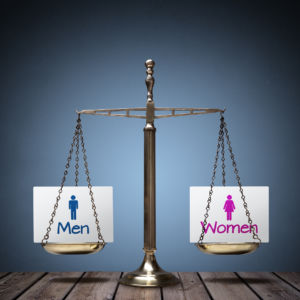“Equal Pay Day” is meant to raise awareness to the cause of equal pay for women. It falls on April 2 this year, meaning it takes the typical American woman until April 2, 2019, to “catch up” to what the typical American man earned in 2018. This implies that women have to work harder than men just to get the same compensation, but, thankfully, on the whole, that is not true.
If advocates for equal pay want to be taken seriously, they should abandon the “Equal Pay Day” event as a tactic and acknowledge that the raw wage gap should not be used to justify public concern or policy change.
Equal Pay Day is based on the gender wage gap statistic published by the U.S. Department of Labor. But this statistic, as any high school math student knows, suffers from serious confounding variables. It’s just two averages (for men’s earnings and women’s earnings) that don’t compare apples to apples or men and women in the same jobs, with the same experience or hours.
In other words, the wage gap does not measure “equal pay for equal work,” a concept Americans universally support.
Today, women and men start their careers with virtually no wage gap, but around age 25 — the time when many people start families — the disparity emerges. This suggests that mothers (in general) are “leaning out” of their professional work while fathers are “leaning in.”
Not surprisingly, 88 percent of men work full-time compared to just 75 percent of women. And among full-time workers, men work 8.3 hours per day on average compared to 7.8 hours for women. This fact alone accounts for 11 cents on the dollar (of the total wage gap, which is about 18 cents).
Men also pursue more high-paying professions, starting with their choice in college majors, which tend to concentrate on more lucrative than fields of study than those dominated by women.
Some people might cringe at this analysis, because it seems to justify that women contribute, earn or even deserve less than men.
Here’s the trouble: The wage gap (or any wage-centric metric) only measures paid work and only one form of compensation. For one thing, it doesn’t measure the (priceless) unpaid work that women (and men) do in their homes and communities. Furthermore, workers know that while take-home pay is important, that is just one way you are rewarded through your job. Flexibility and personal satisfaction — the pleasure one derives during work — also count.
Many people pursue professions they love even when they aren’t lucrative. Those people aren’t making the wrong choice when they prioritize job characteristics other than money, but that’s not how it looks in the wage gap statistics.
In this sense, the wage gap is and (may always be?) rigged in favor of men because of men and women’s different roles and preferences in paid work versus family life. This is not something of which women should be ashamed.
Furthermore, the wage gap paints an unrealistic picture of American households. The vast majority of workers live and share resources within mixed-sex households or families, and we cheer when our loved ones (male or female) get wage raises. We understand that the labor market is not a zero-sum War of the Roses.
Obviously, the goal of “Equal Pay Day” is to suggest that women are limited by their sex because of workplace discrimination. Discrimination may contribute to the wage gap, but not in a substantial way (or in a way that is easy to measure). Sex-based wage discrimination is already illegal, and has been since the 1964 Equal Pay Act. Outlawing something doesn’t make it nonexistent, but women should be encouraged that in the United States, the law is already squarely on our side.
By lumping sex-based wage discrimination in with other factors that rightly affect pay (like profession, seniority, experience, education, hours or working conditions), advocates for pay equity do women no favors. Instead, this signals disapproval of the choices women make that result in fewer earned dollars. This is understandably off-putting to many women and ultimately hurts the cause.
It’s time to drop “Equal Pay Day” from the calendar and instead get the facts straight.

